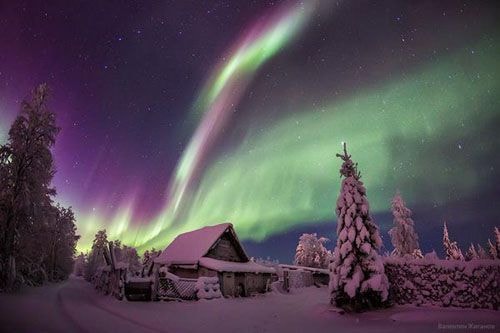Explaining the aurora phenomenon
Aurora light is produced by interactions between solar energy particles and the Earth's atmosphere.
 |
| A strip of light curves across the sky. Photo: Twitter |
People living in high latitudes can witness the aurora borealis, a phenomenon characterized by multicolored lights appearing in the night sky. In this phenomenon, the bands of light are constantly moving and changing. They are mostly green, but sometimes also pink, red, purple and white.
The Sun is about 150 million kilometers away from Earth. Huge solar storms create streams of energetic particles flying through space. If Earth were in the path of these particles, the charged particles would "attack" the Earth's atmosphere.
Electrons in atoms in the atmosphere move to higher energy orbits, farther from the nucleus. When an electron moves back to a lower energy orbit, it releases a particle of light, or photon. According to scientists, the process of aurora is similar to what happens in neon lights, but on a much larger scale.
Auroras appear in arcs or spirals, following the lines of the Earth's magnetic field. Researchers believe that different gases in the Earth's atmosphere cause the aurora's vibrant colors. For example, oxygen creates green, nitrogen creates blue or red.
According to VnExpress






